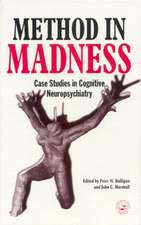Source Control: A Guide to the Management of Surgical Infections
Autor Moshe Schein, John C. Marshallen Limba Engleză Paperback – 19 sep 2002
Preț: 1045.07 lei
Preț vechi: 1100.06 lei
-5% Nou
Puncte Express: 1568
Preț estimativ în valută:
199.99€ • 207.53$ • 167.16£
199.99€ • 207.53$ • 167.16£
Carte tipărită la comandă
Livrare economică 17-31 martie
Preluare comenzi: 021 569.72.76
Specificații
ISBN-13: 9783540429739
ISBN-10: 3540429735
Pagini: 500
Ilustrații: XXIX, 468 p. 10 illus.
Dimensiuni: 155 x 235 x 26 mm
Greutate: 0.76 kg
Ediția:2003
Editura: Springer Berlin, Heidelberg
Colecția Springer
Locul publicării:Berlin, Heidelberg, Germany
ISBN-10: 3540429735
Pagini: 500
Ilustrații: XXIX, 468 p. 10 illus.
Dimensiuni: 155 x 235 x 26 mm
Greutate: 0.76 kg
Ediția:2003
Editura: Springer Berlin, Heidelberg
Colecția Springer
Locul publicării:Berlin, Heidelberg, Germany
Public țintă
Professional/practitionerDescriere
Source control is the key to the management of surgical infections. Surgical decision making is based on the marriage of evidence from clinical studies, inferences from biology, and the elusive component of surgical experience; this book combines these three elements. We have recruited an international group of authors who are acknowledged leaders in the field of surgical infectious diseases. We have challenged them to integrate evidence with experience and an understanding of biology so as to create overviews that will help the clinician who must make the difficult decisions. And we have kept them honest by asking a second group of equally eminent commentators to provide supporting or alternative views - in essence, to recreate the kind of dialogue that takes place between clinicians discussing a difficult problem. This is THE manual for the authoritative management of surgical infections!
Cuprins
1 Introduction.- I: Principles of Source Control.- 2 The Biological Rationale.- Invited Commentary.- 3 Experimental Models of Source Control.- Invited Commentary.- 4 Drainage.- Invited Commentary.- 5 Debridement and “Peritoneal Toilet”.- Invited Commentary.- 6 Device Removal.- Invited Commentary.- 7 Definitive Versus Temporizing Therapy.- Invited Commentary.- 8 Deciding on the Extent of Surgical Therapy.- Invited Commentary.- 9 Consequences of Failed Source Control.- Invited Commentary.- II: Source Control in Specific Locations.- 10 Diffuse Peritonitis.- Invited Commentary.- 11 Gastric and Proximal Small Bowel.- Invited Commentary.- 12 The Colon.- Invited Commentary.- 13 Infection and Trauma of the Rectum and Anus.- Invited Commentary.- 14 Acute Appendicitis.- Invited Commentary.- 15 Bariatric Operations.- Invited Commentary.- 16 The Gallbladder and Biliary Tree.- Invited Commentary.- 17 Pancreatic Infection.- Invited Commentary.- 18 Liver Abscesses.- Invited Commentary.- 19 Acute Mesenteric Ischemia.- Invited Commentary.- 20 The Esophagus.- Invited Commentary.- 21 Pleural Empyema.- Invited Commentary.- 22 Soft Tissue Infections.- Invited Commentary.- 23 Diabetic Foot.- Invited Commentary.- 24 Hand Infections.- Invited Commentary.- 25 Head and Neck Infections.- Invited Commentary.- 26 Vascular Graft Infections.- Invited Commentary.- 27 Bone and Joints.- Invited Commentary.- 28 Incisional Surgical Site Infections.- Invited Commentary.- III: Special Problems.- 29 Timing of Intervention.- Invited Commentary.- 30 Complications of Source Control.- Invited Commentary.- 31 Reoperation After Source Control Surgery for Intra-abdominal Infection.- Invited Commentary.- 32 Trauma.- Invited Commentary.- 33 The Burn Wound.- Invited Commentary.- 34 Organ Transplant Patients.- Invited Commentary.- 35 Tertiary Peritonitis.- Invited Commentary.- 36 The Role of Laparoscopy.- Invited Commentary.- 37 Pediatric Surgery.- Invited Commentary.- 38 The AIDS Patient.- Invited Commentary.- IV: Evaluating the Adequacy of Source Control.- 39 Clinical and Radiographic Assessment.- Invited Commentary.- 40 Monitoring the Course of Inflammation.- Invited Commentary.- 41 Empiric Reexploration — Is There a Role?.- Invited Commentary.- 42 Planned Relaparotomies and Laparostomy.- Invited Commentary.- 43 Antibiotics as an Adjunct to Source Control: Revised Surgical Infection Society Guidelines for Antimicrobial Therapy of Intra-abdominal Infections.- 44 Epilogue.
Caracteristici
First manual on source control, the current approach to the management of surgical infections
Source control is the key to the management of surgical infections: to control the source, focus on the source
This well structured manual is the authoritative guide to source control
Pocket-size and laminated for use at the site!
Source control is the key to the management of surgical infections: to control the source, focus on the source
This well structured manual is the authoritative guide to source control
Pocket-size and laminated for use at the site!




















